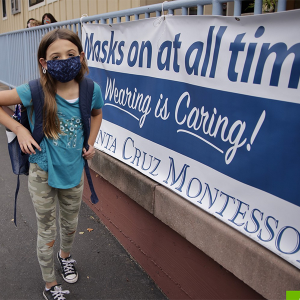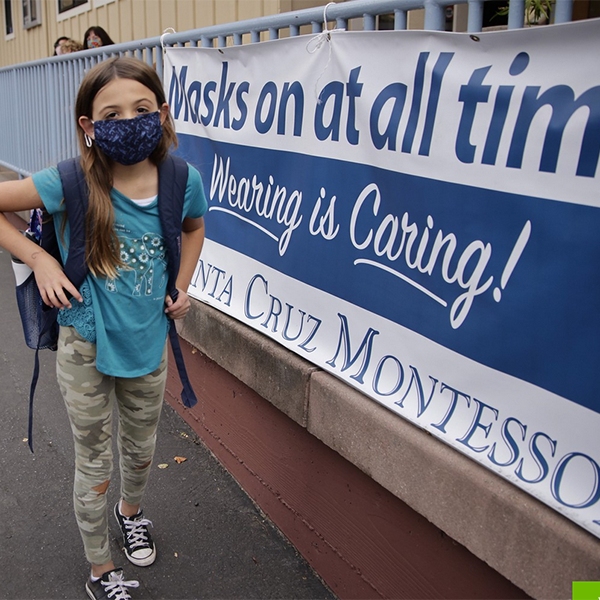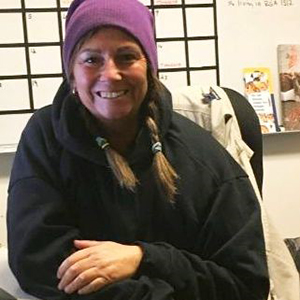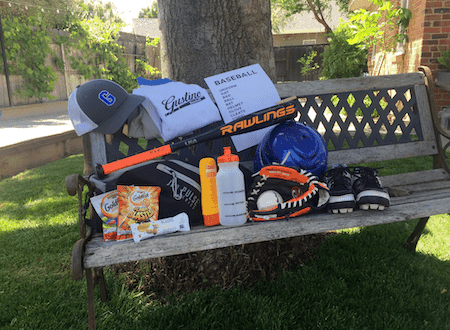Face to Face
How our Local Schools are Teaching In Person
By Jeanette Prather

It is safe to say that the domino effect of having schools halt in-person education for the majority of 2020 has been … disruptive. Parents, students, school faculty and anyone who has a concept of what it takes to educate youth understands the complexity of “the system.” Demonstrating an admirable resilience in the face of a pandemic, students have adapted and adjusted to the times, and teachers have shown that their valiant efforts and unwavering passion can and will educate children across many platforms and over a variety of wavelengths. So, when it was announced that schools and small cohorts were allowing in-person education, following specific and rigid guidelines, it’s not surprising that most private and public schools jumped at the opportunity.
“We are carefully following all of the protocols and guidelines laid out by the County Health Department and the County Office of Education,” said Jennifer Graham, Gateway School’s Director of Advancement. “We created a very detailed guide that documents all of our procedures to ensure the health and safety of our students and staff. Examples of things we are doing include: Staggering arrival and dismissal times; conducting daily temperature checks upon arrival; building a dozen outdoor classroom structures; creating cohorts of students that don’t mix; allowing only pre-packaged food for birthday and other classroom celebrations; assigning bathrooms, playground materials, and classroom supplies to specific cohorts; replacing water fountains with touchless sinks for washing hands and filling water bottles; suspending our optional catered lunch program; requiring all students to use water bottles; creating one-direction paths of travel; and installing touchless hand sanitizer stations throughout the campus.”
This seems to be a common thread woven between private, public, and even local pre-schools. Spring Hill Elementary, for example, followed closely multiple reputable online resources and databases that garnered more detailed information on in-person, children education. They consulted the Santa Cruz County Public Health Information and Guidance, Santa Cruz Public Health Press Releases, California Department of Public Health Travel Advisory, California Department of Public Health Gatherings Order, Guidance on Cohorts (California Department of Public Health – CDPH)), Guidance for Schools (State of California, CDPH, Cal/OSHA), Guidance for Employers (State of California, CDPH), Campus Checklist (State of California, CDPH, Cal/OSHA), Guidance for Use of Face Coverings (CDPH), Handwashing: How to, why, the science (CDC), and What if someone is sick and/or suspected of having COVID-19 (Santa Cruz County Health Services), to name just a few on the extensive list.
“It is working!” Said Marielle Warren, Head of School at Spring Hill School. “We have had students on campus since late September, and we are still going strong. We have an extensive COVID-19 Prevention Plan in place, have been following it and letting it do its job.”
Some of the precautions that Spring Hill have taken, involve cohorts not utilizing the same bathroom, eating outside, not sharing the same eating area, and weekly rotations for using outdoor space.

Spring Hill and Gateway Schools are not the only facilities to have taken up extensive precautions with opening small cohorts of children. “To educate and protect the health and well-being of our community, signs, such as symptoms and signs of COVID-19, how to properly wear and use cloth face covering, healthy hygiene habits, are posted at each entrance of the school,” said Leigh Ann Clifton, the Director of Marketing & Communications at Mount Madonna School. “Students, faculty and staff undergo pre-screening using the Imhealthytoday (IHT) screening app and on-site temperature screening for COVID-19 at designated screening points. We have partnered with IHT, a ‘data-driven, data-Managed’ program to assist in maintaining a safe and healthy environment for our community.”

While in school at Mount Madonna, students, faculty, and staff are required to wear face coverings, maintain at least six feet of distance, and reinforce proper handwashing techniques following CDC guidance. “Mount Madonna School (MMS) prioritizes the safety of our school and extended community. We have built-in layers of strategies to mitigate the spread of COVID-19,” said Clifton.
Kirby School was also among those taking major precautions while they were serving student in-person education during October. According to their website, the school has adopted intensive cleaning and disinfecting procedures, limiting visitors, facilities modifications (like installing Plexiglas barriers in the lobby and dual sink hand washing stations for crowding prevention, for example), and maintaining constant physical distancing. “In October, we opened for in-person classes for 6th and 7th grade stable cohorts (groups completely independent of one another),” said Paige Berardo, Communications Director at Kirby School. “We were at the threshold of expanding in-person classes to all grades when Santa Cruz reverted to the purple tier under the considerable weight of the third wave of COVID, at which point we decided, given the success of our online program, to return to distance learning.”
Something that all schools agree upon is overall safety for students, teachers, and other school faculty. “Everyone has some level of anxiety about the current situation of the pandemic – it would be strange not to, wouldn’t it?” Asked Graham. “[Gateway School’s] invested a lot in improving our site and developing protocols to keep everyone safe, and we’re focused on the four major factors that contribute to transmission: duration, distance, directness, and ventilation.”
Prior to allowing students to attend a small cohort on campus, DeLaveaga Elementary sent out a 14-page document outlining what is expected of parents and students, as well as a three-page contract for families to sign. Much of the document specifies what the other cohorts contain, with a strong emphasis on consistent attendance. “If your child has three unexcused absences or tardies, we will need to discontinue your child’s participation in the cohort program and select another student to take their place,” wrote the document. “Students will enter campus at the gate on Prospect Heights at 8:15 am. The gate will be locked at 8:30 am.”
For public schools, priority for in-person education seemed to be given to those students with Individual Education Plans or needing other special resources. For the private school sector, it seemed a bit easier to accommodate small cohorts of students. “[In-person learning] is not a one-size fits all situation,” said Warren. “[Spring Hill] works because we are small. Large schools have many more hurdles to clear in order to bring children on campus while also following all of the guidelines. In addition, some students do quite well online. It also varies quite a bit depending upon the age of the student. The education community has learned a lot this year about how students thrive.”
Younger children, those preschoolers and earlier, have been able to return to their facilities since July. “Santa Cruz County gave the ok to open at the end of June, so we decided to open on July 1 to our families,” said Krishanie Weera, Head of School at Children’s Preschool Santa Cruz. “The virus numbers at that point seemed to remain steady and weren’t really going up. We had to open in order to survive.”
Deemed essential businesses over the summer, daycare and preschool facilities have already explored the in-person education obstacles that many other schools are now going through.
“It’s been wonderful to have Gateway students on campus,” said Graham. “They are so excited to be together again. It’s exciting to see how our teachers help students learning at home connect and participate with those learning on campus.”
“While the ‘how’ in the classroom might appear different this year, the ‘why’ and the intention are still present,” said Clifton. “Although the cohorts are designed to limit the interaction of students with other grade-levels, we employed technology in the classroom to continue building community. Mount Madonna has a rich history of supporting the social and emotional health of our students. As we know, this is now more important than ever.”
When asked if each school thought the students participating in the small cohorts were benefiting from that type of learning experience, they all unanimously agreed that it was. “Definitely,” said Berardo. “I also believe that the online learning experience was improved by students getting to be together [at Kirby], even if only two days per week.”
“Humans have a need for connection,” said Mount Madonna’s Upper School Director, Shannon Kelly. “The pandemic has disrupted our lives and prevented us from connecting in most of the ways we are used to. I am grateful that we are able to provide a safe space for our students, faculty, and staff to come together to learn, bond, and care for one another.”
“One of our guiding values [at Spring Hill] is to be a supportive school community,” said Warren. “In these challenging times, that value has shone through with everyone’s cooperation and commitment to maintaining the health and safety of our students, families, faculty and staff. We could not be doing this without them.”
“For the month they were in-person, the small cohorts of 6th and 7th graders [at Kirby] went brilliantly,” said Berardo. “It was a positive experience for everyone including our teachers. Our desire to create a sense of class unity was achieved. Safety protocols were followed well, and we were able to remain flexible to adapt to changing health guidance as it came.”
Santa Cruz Montessori school has also managed in person learning by cutting back students and upping safety protocols.
“Santa Cruz Montessori reopened in person with small summer programs in June of 2020,” said Head of School Kim Saxton. “Throughout the summer, a thorough operating plan was created to ensure the safety and well being of students and staff as we worked to reopen the whole school for in person learning in September.
“Our primary and toddler programs were able to open with modifications in person at the beginning of the school year. Staff follow all safety measures required by child care licensing and the health department, groups are limited to half the usual size, and children have learned to wear masks and adapt to small changes in their day that ensure their safety. They are thrilled to be back to school in person and are thriving.
“Our elementary and junior high programs started the school year in distance learning and some students have continued with distance learning, while many returned in person when these programs reopened later in September. Elementary and junior high teachers are teaching both in person and distance learners throughout the day. The flexibility of Montessori allows for this and the dedication of the teachers has continued to connect our at home students with their in-person classmates. Students may work together via Zoom to attend lessons and work together.
“We were able to purchase electrostatic misters in the summer and use them each day when the children are gone for cleaning.
“I also believe that our high quality air filters in each classroom is helping. Children can work outside as well.
“Temperature checks and a list of health questions are asked daily of all students and staff. No one can enter the community unless they are 100 percent symptom free. All of these things are mentioned in our Operation Plan.
I also want to note that I am extremely grateful for the support of Faris Sabbah, County Superintendent of Schools, for his ongoing support of the Independent Schools. Without his thoughtful guidance the task of opening our school would have been much more challenging, if not impossible. His care and guidance along the way has been instrumental in the success of our opening.







